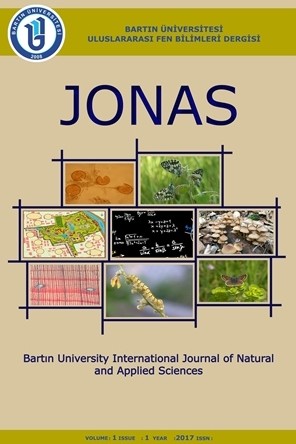A RESEARCH ON THE PHYSICAL FEATURES OF CONCRETES WITH FERRO-CHROMIUM SLAG
A RESEARCH ON THE PHYSICAL FEATURES OF CONCRETES WITH FERRO-CHROMIUM SLAG
Ferro Chromium Slag, porous materials, lightweight aggregates, building material concrete,
___
- 1. Yıldırım M.M. (1987). Metallurjik katı atıklardan yaralanabilme olanakları, T.M.M.O.B, Metallurji Müh. Odası, 49, 12-15.
- 2. Babu D.S, Babu K.G &Wee TH. (2005). Properties of lightweight expanded polystyrene aggregate concretes containing fly ash. Cement and Concrete Research, 35, 1218-1223.
- 3. Kaya A. & Kar F. (2016). Properties of concrete containing waste expanded polystyrene and natural resin, Construction and Building Materials, 105, 572-578.
- 4. Bicer A. & Kar F. (2017). The effects of apricot resin addition to the light weight concrete with expanded polystyrene, Journal of Adhesion Science and technology, 31(21), 2335-2348.
- 5. Devecioglu A.G. & Bicer Y. (2016). The effects of tragacanth addition on the thermal and mechanical properties of light weight concretes mixed with expanded clay. Period. Polytech. Civil Eng., 60(1), 45-50, 2016.
- 6. Demirel B. (2013). Optimization of the composite brick composed of expanded polystyrene and pumice blocks. Construction and Building Materials, 40, 306-313.
- 7. Al Rim K., Ledhem, A. & Douzane, O. (1999). Dheilly, RM. Queneudec, M.. Influence of the proportion of wood on the thermal and mechanical performances of clay-cement-wood composites. Cement and Concrete Composites, 21, 269-276.
- 8. Benazzouk A., Douzane O., Mezreb K., Laidoudi B. & Queneudec M. (2008). Thermal conductivity of cement composites containing rubber waste particles, Experimental study and modelling. Construction and Building Materials, 22, 573-579.
- 9. Bicer A. & Celik N. (2020). Influence of pine tree resin on thermos-mechanical properties of pumice-cement composites, Cement and Concrete Composites, 112.
- 10. ASTM C. (1985). Standard specification for fly ash and raw or calcined natural pozzolan for use as mineral admixture in Portland cement concrete, ASTM, Philadelphia, ASTM C; 618-685.
- 11. TS 500, (2000). Turkish Standard, Ankara.
- 12. BS 812-109, (1990). Testing aggregates-part 109: methods for determination of moisture content, British Standards Institution 1990.
- 13. Toksoy M. (1988). Thermal conductivity coefficients of industrial materials, Journal of Engineers and Machinery, 347, 12-15.
- Yayın Aralığı: Yılda 2 Sayı
- Başlangıç: 2017
- Yayıncı: Bartın Üniversitesi
KENTSEL ARAYÜZ /ARA MEKÂN KALİTESİNİN TAKSİM ASMALIMESCİT MAHALLESİ ÜZERİNDEN OKUNMASI
THERMAL AND MECHANICAL PROPERTIES OF BUILDING STONES IN AFYON AND KARAMAN REGION
VERMİKOMPOSTUN (SOLUCAN GÜBRESİ) ÜRETİMİ VE BİTKİ BESLEMESİNDEKİ ÖNEMİ
Ezgi ABACIOĞLU, Sinem YATGIN, Elif TOKEL, Perihan YÜCESOY
A RESEARCH ON THE PHYSICAL FEATURES OF CONCRETES WITH FERRO-CHROMIUM SLAG
